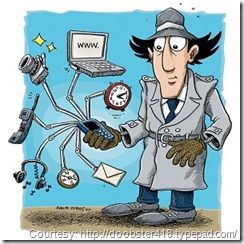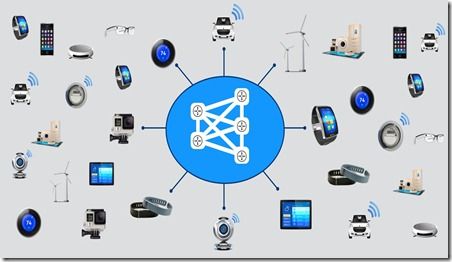devices
3 TopicsIoT Effect on Applications
As more applications are needed to run those Things, traditional infrastructure concerns like scale and reliability will become paramount. Additional challenges with identity and access, improving the user experience, and the need for faster provisioning of services could overwhelm IT departments. A robust, scalable and intelligent infrastructure will be necessary to handle the massive traffic growth. IT professionals are tasked with designing and building the infrastructure that’s ready for the challenges that lie ahead, including IoT. But many of today’s traditional architectures will buckle under the increasing demand of all the connected devices. According to IDC, the rate at which applications double in the enterprise is every four years. This is likely to be cut in half as more IoT devices need applications supporting them and organizations need to be ready for the deluge. The Domain Name System (DNS) is the most likely method for connected devices to locate needed services, and it’s potentially the means by which people will locate the devices themselves. There might be other schemas in the planning process, but those would require the adoption of a new technology naming standard, which would be costly, slow and highly unlikely. Clearly, security must also be present since Iot has the potential to weave vulnerabilities throughout the system. Unless organizations remain proactive, the ubiquity of connected devices presents a gold mine for attackers. Outpacing attackers in our current threat landscape will require more resources in order to minimize risk. Organizations will need to continue to harden our own infrastructures and look to cloud services like DoS mitigation to lessen the effects of attacks. At the same time, the explosion of embedded devices may well be the event that drives more mainstream IPv6 adoption. There are several advantages to IPv6 such as a large namespace, address self-configuration, and the potential to remove Network Address Translation (NAT) problems. The data center will require some planning to embrace this shift. Components such as routers, firewalls, and application delivery controllers will need to be IPv6-ready, capable of understanding the protocols and data that devices will use to communicate. To ensure security, intelligent routing, and analytics, networking layers will need to be fluent in the language your devices use. Understanding these protocols within the network will allow traffic to be secured, prioritized, and routed accordingly. Recognizing and prioritizing these messages will enable better scale and manageability of the onslaught of device traffic and data. Intelligence will also be needed to categorize what data needs attention (like a health monitor alert) and what doesn’t (temperature is good). According to TechTarget, to ensure high availability of IoT services, enterprises must consider boosting traffic management and monitoring. This will both mitigate business continuity risks, and prevent potential losses. From a project planning standpoint, organizations need to do capacity planning and watch the growth rate of the network so that the increased demand for the required bandwidth can be met. ps Related The Digital Dress Code Is IoT Hype For Real? What are These "Things”? IoT Influence on Society CloudExpo 2014: The DNS of Things Intelligent DNS Animated Whiteboard The Internet of Me, Myself & I Technorati Tags: devices,f5,iot,m2m,security,sensors,silva,things,wearables,dns,applicatons Connect with Peter: Connect with F5:572Views0likes0CommentsThe Digital Dress Code
Coming to an office near you. If you thought the Bring Your Own Device (BYOD) craze was a headache, just wait until button cameras, smart watches, and spy glasses (already here) are a daily occurrence in the office. Workplace #wearables will be a huge challenge in the coming years as more devices, clothing and pretty much any 'thing' with a chip or sensor become commonplace in our society. The device explosion with IoT (Internet of Things) will be much larger than any of these mobile phones we carry around. A couple new reports examine the impact of IoT on businesses. PricewaterhouseCoopers (PwC) released a report on wearable technology after surveying 1,000 consumers, 314 of which use some form of wearable, as part of "The Wearable Future" report. Some key findings included that 77% of respondents thought that a top benefit of wearable technology is the potential to make employees more productive and efficient. Honestly, when I read that I immediately thought of my boss's hologram standing behind me in my home office watching my work. 70% expect that their office should allow the use of wearables...probably the same folks who wanted to bring their own tablet and 46% felt that organizations should fund wearables rather than the dreaded BYOD. The idea is that if the technology is simple to use and integrates with other devices, that should boost productivity and lift profits. Even so, there needs to be significant investment to ensure the camera shirt buttons can talk to Exchange, ya know. The biggest concerns, according to PwC, include the risk of security breaches, invasion of privacy, tech dependence, having too many devices and on a more human level, not being able to relate to others or simply looking silly with all those attachments. PwC also looked at the industries that will capitalize on the wearable market. Entertainment will be more 'immersive and fun'; Social Media gets more real time updates from your clothes; Gaming can be more visually and physically engaging; Advertisers will want the space on your back; Healthcare will track your vitals; and Retail could offer “pleasant, efficient” shopping experiences. Business Insider recently released a report looking at the device growth They feel that by 2019, IoT devices will more than double the size of the smartphone, tablet, PC, wearable and connected car combined. That's huge. All the software, hardware, maintenance and management of IoT could add $1.7 trillion to the global economy by 2019. They also feel that the main benefit of IoT will be the efficiencies and cost savings by giving the user more control. But, there are sill few standards and even less compatibility so that needs work, not to mention the security risks inherent in these nouns. The processing power, storage, cameras, sensors and everything else will far surpass the USB-stick risks of years past, plus the potential of all this corporate data getting stored in personal clouds could spell big trouble. And how are all these nouns going to found on the internet? DNS of course! Once all these various wearables hit the office, DNS will be the thing that allows us people to find them threads. I truly feel that DNS will be one of the most strained technologies as more connections happen in the office and will be discussing this trend at the ThingsExpo - which is part of SYS-CON Media's CloudExpo in Santa Clara this week. ps Related: Employees Excited, Concerned About Wearables in the Workplace Medical Devices: Safeguarding the Healthcare Revolution How Smart, Connected Products Are Transforming Competition The 'Internet of Things' Will Be The World's Most Massive Device Market And Save Companies Billions Of Dollars As Wearables Get Hot, These 6 Industries Are Poised to Capitalize Why the Internet of Things will turn data computing on its head My Sensored Family The Internet of...(Drum Roll Please)...Band-Aids?!? The Breach of Things Technorati Tags: iot,things,wearables,workplace,sensors,silva,devices,byod,smart,f5,big data,privacy Connect with Peter: Connect with F5:508Views0likes0CommentsWhat are These "Things”?
The Internet of Things (IoT) refers to the set of devices and systems that interconnect real world sensors and actuators to the internet. This includes many different types of systems, including: Mobile devices Smart meters & objects Wearable devices including clothing, health care implants, smartwatches, fitness devices, etc. Internet connected automobiles Home Automation Systems including thermostats, lighting, home security Other measuring sensors for weather, traffic, ocean tides, road signals and more These systems connect to the internet or gateway in a variety of manners including long range WiFi/Ethernet using IP protocols (tcp/udp, including cellular), short range Bluetooth low energy, short range Near Field Communications, or other types of medium range radio networks. Point to point radio links and serial lines are also used. There are many sensors that connect directly to the internet and there are others that may need specialized IoT networking hardware. Message Queue Telemetry Transport (MQTT), for instance, is a subscribe and publish messaging protocol designed for lightweight machine to machine (M2M) communications. Originally developed by IBM, is now an open standard but its primary purpose is to allow a device to send a very short message one hop to a MQ broker and to receive commands from that broker. It needs a gateway or receiver (broker) to communicate. Basically, every message is published to a location, called a topic, clients (the sensors) subscribe to various topics and when a message is published to the topic, the client/sensor gets it. The systems themselves typically fall into a few classes of categories. The smallest devices have 8-bit embedded system on chip (SOC) controllers but no operating system; then there are ones that have a limited 32-bit architecture, like a home router, with or without a base OS and; the most capable systems have either full 32-bit or 64-bit operating platform such as a mobile phone. You might even use your mobile phone to send the data, via the internet, from the IoT device to the destined application. Not only are we interacting with these devices, they are interacting with other machines to send specific Information, which is called Machine-to-machine technology. The M2M fabric works in conjunction with the various systems that support wearables, home networks and the widely deployed sensors. Some areas that you can focus on as IoT progresses include: Focus on scale of core capabilities like DNS and availability Evaluate readiness to federate access across cloud apps Examine state of identity and access to manage millions of users Strategize on automation for provisioning and auto-scale According to Gartner, the Internet of Things is not a single technology but a concept with embedded sensors driving the trend, real time support and learning having a social impact and allows businesses to make situational decisions based on the sensor’s information. With that, no single architecture can address all the potential IoT device areas and requirements of each but a scalable architecture that can add or subtract resources to support a wide variety of scenarios prepares organizations for the impact IoT will have. You can check out F5's The Internet of Things-Ready Infrastructure White Paper to learn more about how an IoT–ready environment can enable service providers and enterprises to begin taking advantage of this societal shift without a wholesale rip-and-replace of existing technology. ps Related Is IoT Hype For Real? Internet of Things OWASP Top 10 Internet of Food The Internet of Me, Myself & I Oh, Is That The Internet You're Wearing? The Analog Generation The Internet of Things-Ready Infrastructure White Paper Technorati Tags: iot,things,devices,sensors,wearables,silva Connect with Peter: Connect with F5:428Views0likes0Comments


